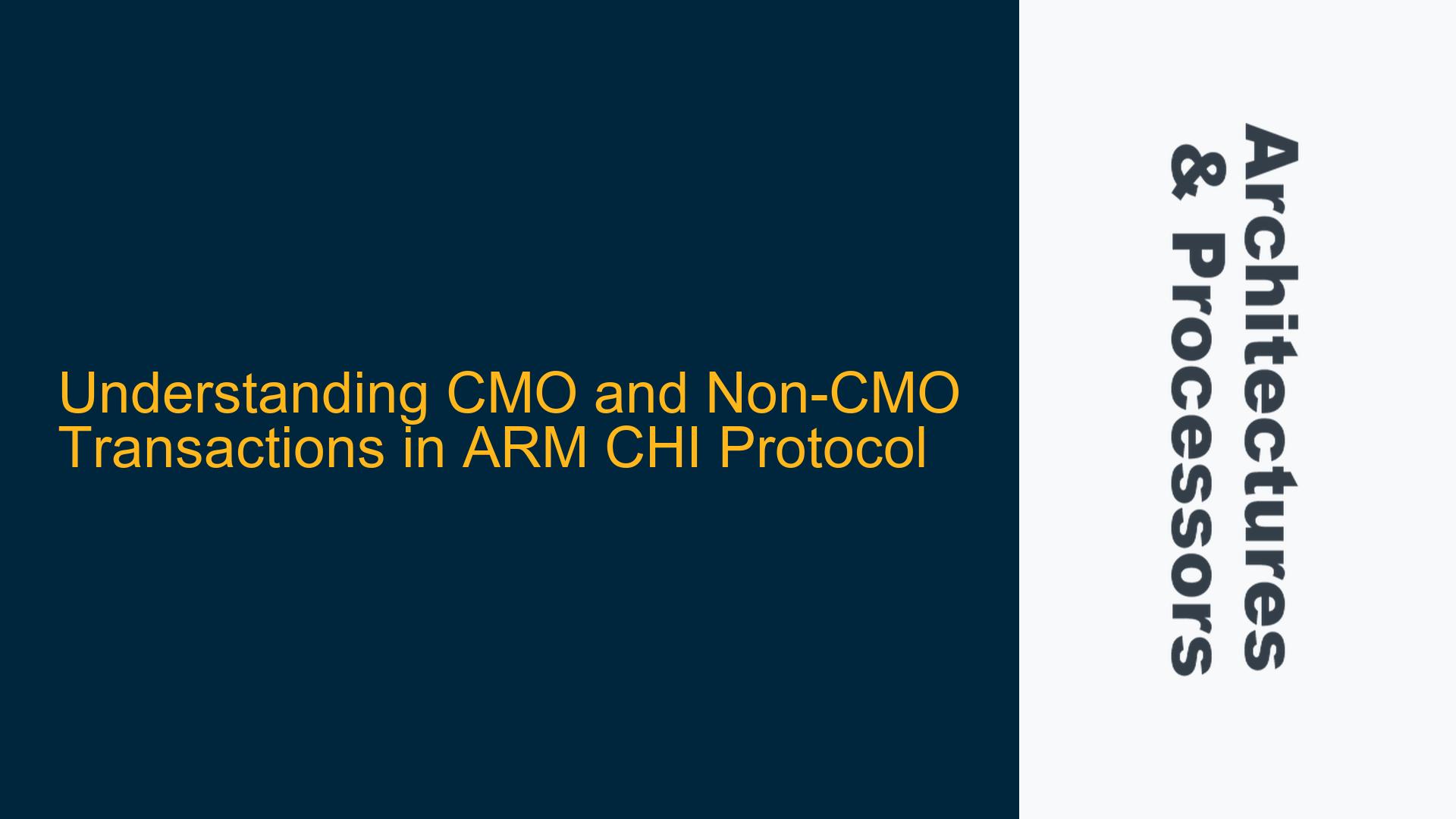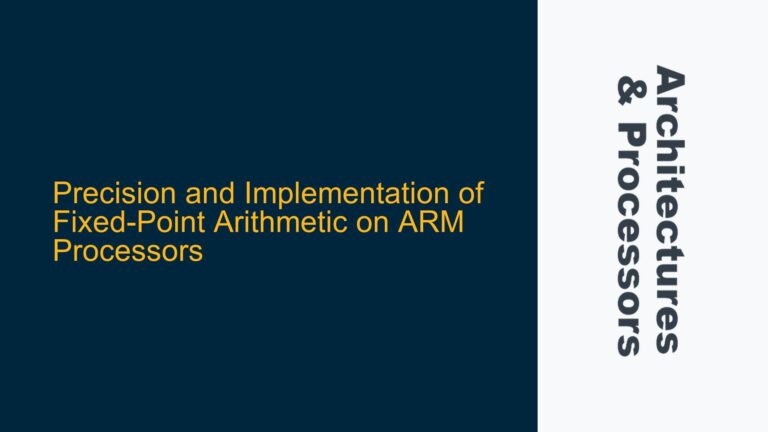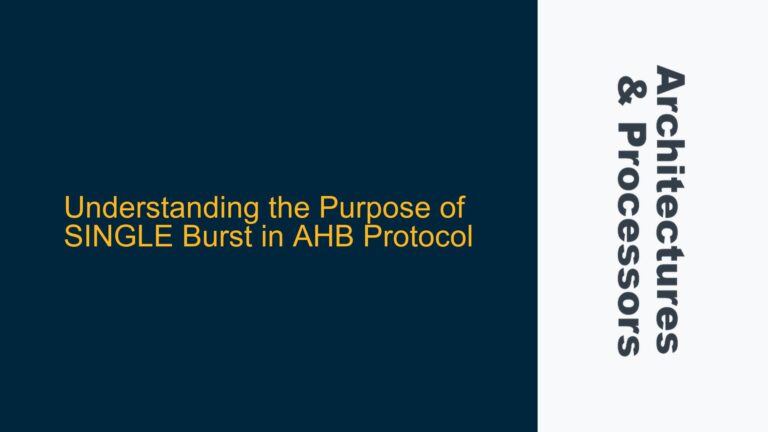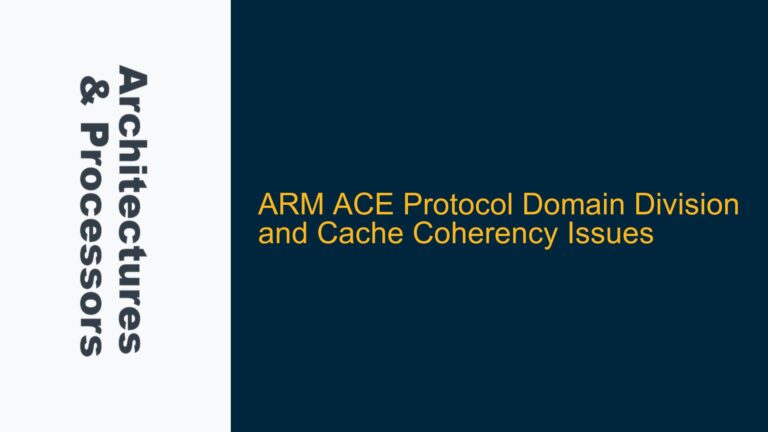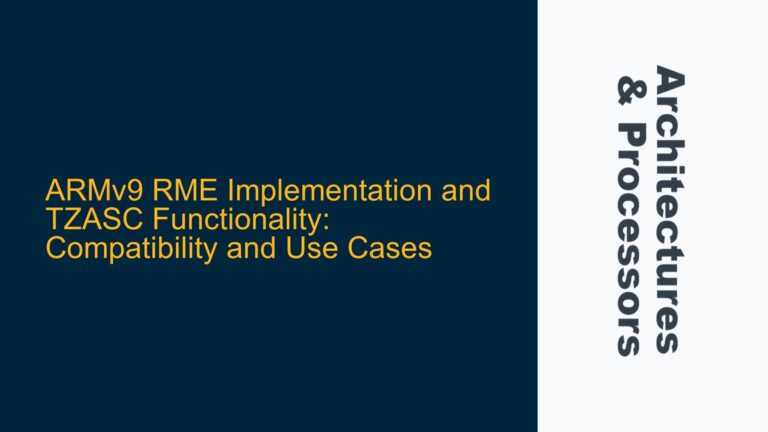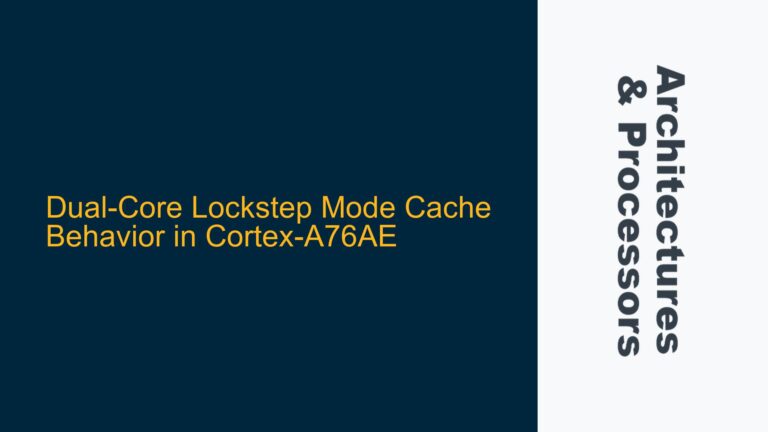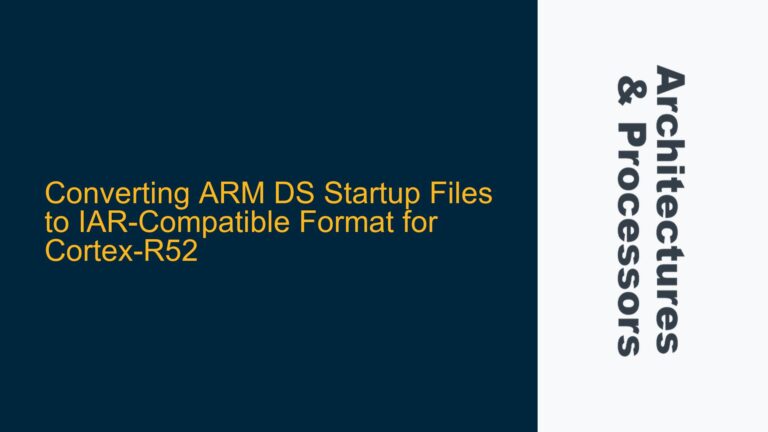CMO Transactions: Cache Maintenance Operations in ARM CHI
Cache Maintenance Operations (CMOs) are a critical aspect of the ARM CHI (Coherent Hub Interface) protocol, designed to manage the state and contents of caches in a coherent system. CMOs are dataless transactions, meaning they do not transfer actual data payloads but instead perform operations that affect the cache state. These operations are essential for maintaining cache coherency, ensuring that all agents in the system have a consistent view of memory.
CMOs are primarily used for invalidating or cleaning cache lines. Invalidation removes a cache line from the cache, marking it as invalid so that subsequent accesses to that memory location will fetch the data from a lower level of the memory hierarchy. Cleaning, on the other hand, writes back dirty cache lines to memory, ensuring that the most recent data is stored in the main memory before the cache line is invalidated or repurposed.
The ARM CHI protocol defines several types of CMOs, each with a specific purpose. For example, the "CleanInvalid" operation combines cleaning and invalidation in a single transaction, which is useful when a cache line needs to be evicted and its contents written back to memory. Another example is the "Invalidate" operation, which simply marks a cache line as invalid without writing back any data.
CMOs are typically initiated by a master agent, such as a CPU or DMA controller, and are propagated through the interconnect to the relevant cache agents. The interconnect ensures that the CMO reaches all caches that might hold a copy of the affected cache line, maintaining coherency across the system.
Non-CMO Transactions: Permission and State Management in ARM CHI
Non-CMO transactions in the ARM CHI protocol serve a different purpose compared to CMOs. While CMOs are focused on cache maintenance, Non-CMOs are used for managing permissions, updating snoop filters, and optimizing data placement. These transactions are also dataless, meaning they do not transfer data but instead perform operations that affect the state of the system.
One of the primary uses of Non-CMO transactions is to obtain permission to store data in a cache. In a coherent system, multiple agents may need to access the same memory location, and it is essential to ensure that only one agent has permission to modify the data at any given time. Non-CMO transactions are used to request and grant these permissions, ensuring that coherency is maintained.
Another important function of Non-CMO transactions is updating the state of snoop filters. Snoop filters are used in coherent interconnects to track which caches might hold a copy of a particular cache line. When a cache line is modified or invalidated, the snoop filter must be updated to reflect the new state. Non-CMO transactions are used to propagate these updates through the interconnect, ensuring that the snoop filter remains accurate.
Non-CMO transactions can also be used to move data closer to the point of expected future use. This is known as data prefetching or data migration. By moving data to a cache that is closer to the agent that is likely to access it, the system can reduce latency and improve performance. Non-CMO transactions are used to initiate these data movements, ensuring that the data is available when needed.
Troubleshooting CMO and Non-CMO Transaction Issues in ARM CHI
When working with CMO and Non-CMO transactions in the ARM CHI protocol, several issues can arise that may affect system performance or coherency. These issues can be challenging to diagnose and resolve, but a systematic approach can help identify and address the root cause.
One common issue is incorrect cache line state transitions. In a coherent system, cache lines can be in one of several states, such as Modified, Exclusive, Shared, or Invalid. CMOs and Non-CMOs are used to transition cache lines between these states, and incorrect transitions can lead to coherency violations. For example, if a cache line is marked as Modified but is not written back to memory before being invalidated, data loss can occur. To troubleshoot this issue, it is essential to carefully review the state transitions triggered by CMOs and Non-CMOs and ensure that they are consistent with the ARM CHI protocol specifications.
Another potential issue is incorrect snoop filter updates. Snoop filters rely on accurate information about which caches hold copies of a particular cache line. If Non-CMO transactions fail to update the snoop filter correctly, the interconnect may not propagate CMOs to all relevant caches, leading to coherency violations. To address this issue, it is important to verify that Non-CMO transactions are correctly updating the snoop filter and that the interconnect is properly propagating CMOs based on the snoop filter state.
Performance bottlenecks can also arise from inefficient use of CMOs and Non-CMOs. For example, excessive use of CMOs to clean or invalidate cache lines can lead to increased latency and reduced system performance. Similarly, inefficient use of Non-CMOs for data prefetching can result in unnecessary data movements, consuming bandwidth and reducing overall system efficiency. To optimize performance, it is important to carefully analyze the use of CMOs and Non-CMOs in the system and identify opportunities to reduce their frequency or improve their efficiency.
In some cases, issues may arise from incorrect configuration of the ARM CHI protocol parameters. For example, the protocol allows for different levels of cache coherency, and incorrect configuration can lead to unexpected behavior. To resolve this, it is essential to review the configuration settings and ensure that they are consistent with the system requirements and the ARM CHI protocol specifications.
Finally, debugging tools and simulation environments can be invaluable for troubleshooting CMO and Non-CMO transaction issues. By using simulation tools that support the ARM CHI protocol, engineers can trace the flow of CMOs and Non-CMOs through the interconnect, monitor cache line state transitions, and identify coherency violations. These tools can provide detailed insights into the behavior of the system and help pinpoint the root cause of any issues.
In conclusion, CMO and Non-CMO transactions are essential components of the ARM CHI protocol, playing a critical role in maintaining cache coherency and optimizing system performance. By understanding the purpose and behavior of these transactions, and by following a systematic approach to troubleshooting, engineers can ensure that their ARM-based SoCs operate efficiently and reliably.
